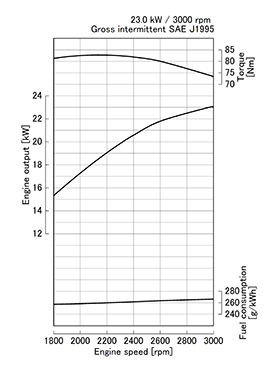Cahaba Valley Farm
Veteran Member
Good point LouNY, I can't believe I left that outOne very important figure is left;
what rpm did they get these numbers at.
*Update: Ok I have updated the first post to show those numbers.
Last edited:
Good point LouNY, I can't believe I left that outOne very important figure is left;
what rpm did they get these numbers at.
I always was looking at tractors in that category. If you go back and read my first post on that thread you will see where I highlighted the word medium frame size which is what I was referring to.the formula is:
HP = Torque x RPM / 5252
For torque in lbf-ft. So you can have torque and hp peaks at different engine rpm depending on specs snd tuning.
why are you looking at sub 2000 pound tractors now? After all that ranting in your other thread, lol.
"So if 2 tractors have the same torque, but one outputs more horsepower, it’s engine rpms must be higher at “rated speed”.If “rated speed” is engine rpms when the PTO is turning at a standardized 540 rpm that most attachments operate at, it means the Deere’s engine is turning at a faster rpm to get the 540 rpm at the PTO.
Like others say:
(Horse) power = Torque x RPM
(don’t worry about the other numbers in the formula. They’re just conversion factors for keeping the units (Hp, foot-pounds, minutes, seconds, etc..) straight.
So if 2 tractors have the same torque, but one outputs more horsepower, it’s engine rpms must be higher at “rated speed”.
“Rated speed” is the undefined, confusing term in the above info.
Example your weedwacker turning at 12,000 rpm may have the same horsepower rating as an electric motor turning 1200 rpms, but it’s going to have 1/10th the torque.
Re read the first post. I updated it with the rated speeds.What part of it are you having problems with?
Then according to those calculations the Kubota should have 36.98 horsepower.I think the problem is that you may be expecting that JD's "rated speed" is the same as Kubota's. It may be that both use the same RPM for rated speed, but it doesn't have to be the same and if it was it would be a coincidence.
In this case it looks to me like JD's engine is set up to produce their torque figure at a rated speed that is slightly higher than the Kubota's. There could be as much as a couple hundred RPMs difference.
If so, and the torque is the same, then when we calculate HP using HP = torque times RPM we get different HP.
Does that help?
rScotty
If you look up the engine specs the v1505 kubota max torque is 77 ft lbs @ 2000 rpm . The jd engine max torque is 88 ft lbs at only 1680 rpm and drops to 77 at its hp rated 2500 rpm. By doing the math for the kubota 30.8hp x 5252 =16176 divided by 2500 rpm =64.7 ft lbs torque at 2500rpm. So in a nutshell the Kubotas torque 77.7 @ 2500 is wrong.I was comparing the specs between a John Deere 3038E and a Kubota LX3310 and I'm not understanding how these numbers work. If anybody has any ideas please share them.
John Deere 3038E:
Engine Torque at rated speed: 77.2 ft-lbs
Rated Speed/RPM: 2500
Engine horsepower: 37.2
PTO horsepower: 30
Weight: 2,222 lbs
Kubota LX3310:
Engine Torque at rated speed: 77.7 ft-lbs
Rated Speed/RPM: 2500
Engine horsepower: 30.8
PTO horsepower: 27
Weight: 1,918 lbs
Is that for the the V1505 naturally aspirated or the common rail turbocharged version used in the LX3310? I thought the max tq was about 87ftlbs for the cr turbo version.If you look up the engine specs the v1505 kubota max torque is 77 ft lbs @ 2000 rpm . The jd engine max torque is 88 ft lbs at only 1680 rpm and drops to 77 at its hp rated 2500 rpm. By doing the math for the kubota 30.8hp x 5252 =16176 divided by 2500 rpm =64.7 ft lbs torque at 2500rpm. So in a nutshell the Kubotas torque 77.7 @ 2500 is wrong.


